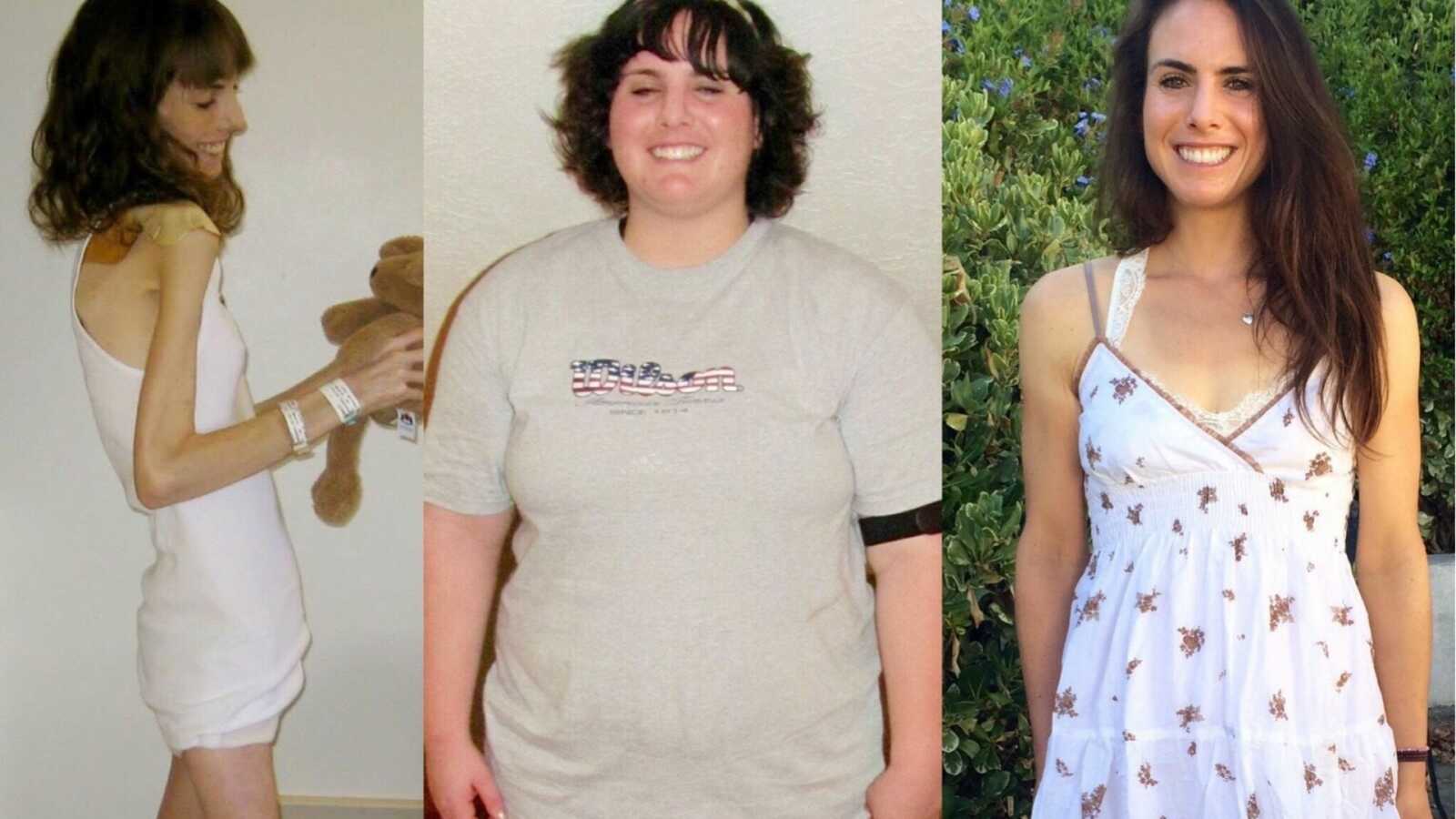TRIGGER WARNING: Eating Disorder
“My freshman year of college was the same year my parents began making my funeral arrangements. I was losing the battle against my eating disorder –anorexia nervosa. I was 56 pounds and dying. However, I didn’t see it this way. I thought I was fine –sometimes even fat. This should have been the end of my struggle, but it was only the beginning. Binge eating disorder and bulimia would follow, and so would my quest to recover and make sense of it all.
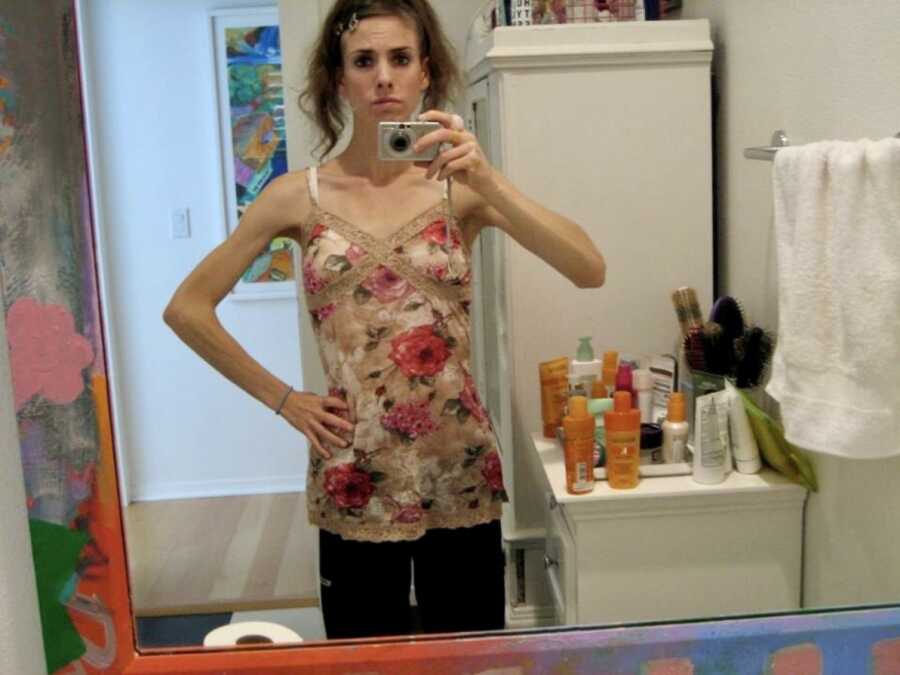
I was a highly sensitive kid growing up –quiet, shy and always ready to please. I lacked self-confidence and tried to make up for it by demanding perfection of myself. I never felt good enough and life seemed more difficult for me compared to others. I was frequently teased by my peers and didn’t fit in, though I desperately longed to. I believed this was due to some undesirable flaw in myself. As it turned out, I had terrible anxiety, depression, and obsessive-compulsive disorder (OCD), but I was too young to know what these were or ask for help. I silently stuffed my shame deeper and strived harder in external areas. I was a competitive athlete, excelled in academics, and had a loving family. Everything pointed towards success for me, and I flashed a convincing smile to affirm this was the case. But truthfully, my smile concealed much darker concerns.
Anorexia entered my life when I was 13-years-old. At the time, I had no idea what an eating disorder was, however, the behaviors I engaged in eased my restless mind. My OCD became energized as it was able to create a whole new host of odd rituals to perform around food, exercise, calories and weight. My anxiety was given a job, as it focused its intentions on being afraid of my body, rather than my everyday life. My depression got a temporary high from losing weight. And most perniciously, I finally felt in charge of my life and falsely believed this was going to be the solution that would make me happy and accepted by my peers. Yet, in reality, I couldn’t have been more out of control, as I did not willfully choose this path. Eating disorders, in fact, are never a choice.
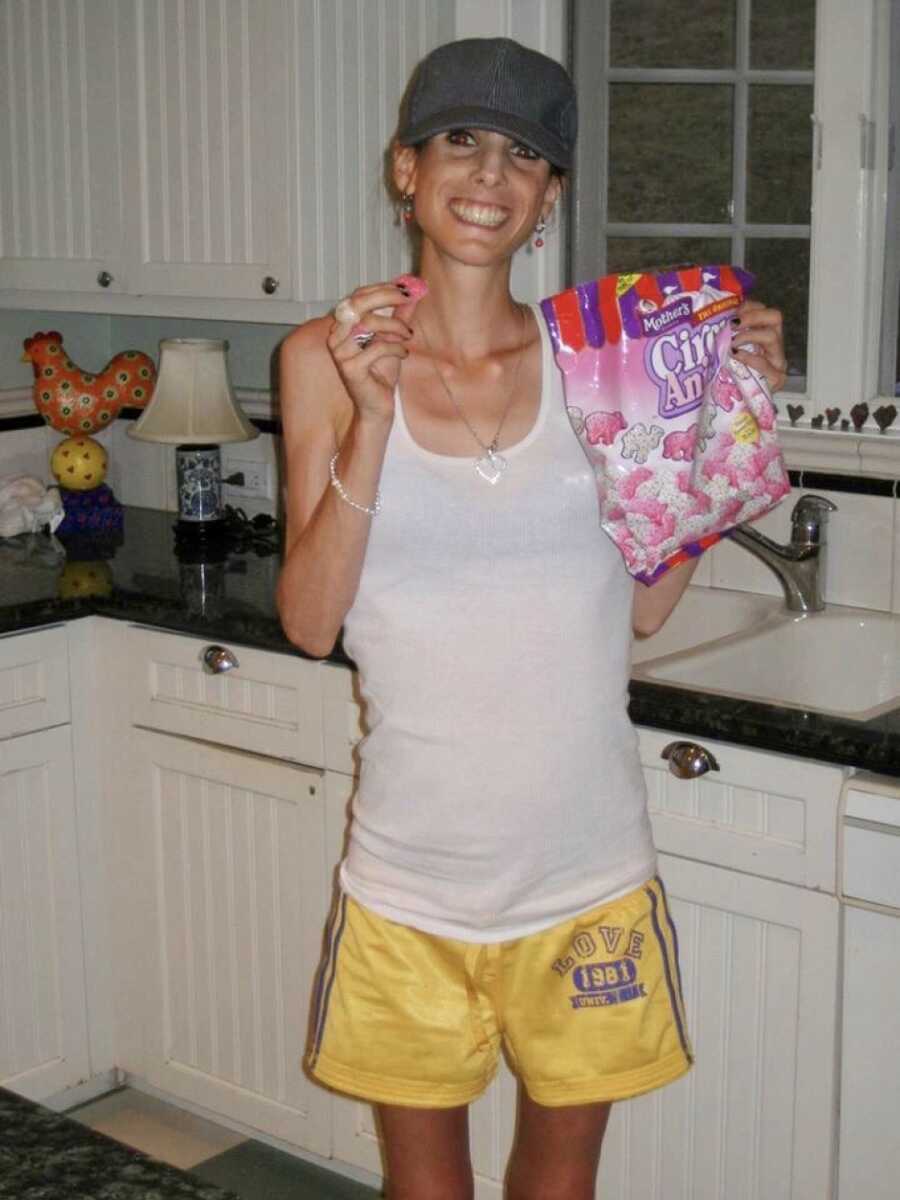
My parents were quick to intervene and made every effort to educate themselves about my recent diagnosis. I failed to make progress with my outpatient treatment providers, and so I was sent to a longer-term inpatient treatment center. My parents had high hopes I would return home cured. I entered the program still in denial about my eating disorder and was overwhelmed by the concept of it all. However, there were many other patients in treatment with me who shared similar struggles. They welcomed me and helped explain the rules of the program. I felt less alone, but I still didn’t understand the whole notion of recovery. I complied with everything asked of me and strove to be a perfect patient. I was discharged in good physical health, but my mental state remained relatively unchanged.
I tried my best to adjust back to my life at home. I only confided in a few people about my struggles, and otherwise tried to pretend I was perfectly fine. Being given a diagnosis of an eating disorder only made me feel more estranged from my peers, and I worried my classmates would find out and ridicule me. As my stress levels rose, so did my need to find a way to cope. I began engaging in harmful habits again and became an exercise addict –sometimes going to three different gyms three times a day. I truly wanted to change, but I found myself overwhelmed by the whole process of recovery. I doubted that I was capable of it, and I often questioned whether or not I really wanted to change. Recovery felt daunting and my eating disorder felt safe. Writing daily in private diaries became a way for me to temporarily escape my head. I recorded my thoughts in meticulous detail and confessed my honest feelings and innermost conflicts.
I was accepted into the University of California, Davis and I was looking forward to my freshman year. My parents were extremely hesitant about letting me go due to my lack of progress with recovery. I pleaded with them that it would be the fresh start I needed, and they cautiously agreed. My first quarter went by in a blur. I tried my best to fulfill the promise that I’d be a changed person and free from my disorder, but I was gravely mistaken. My eating disorder only gripped me tighter as I was away from my parents’ watchful eye, and my time at UC Davis soon turned into a haunting existence.
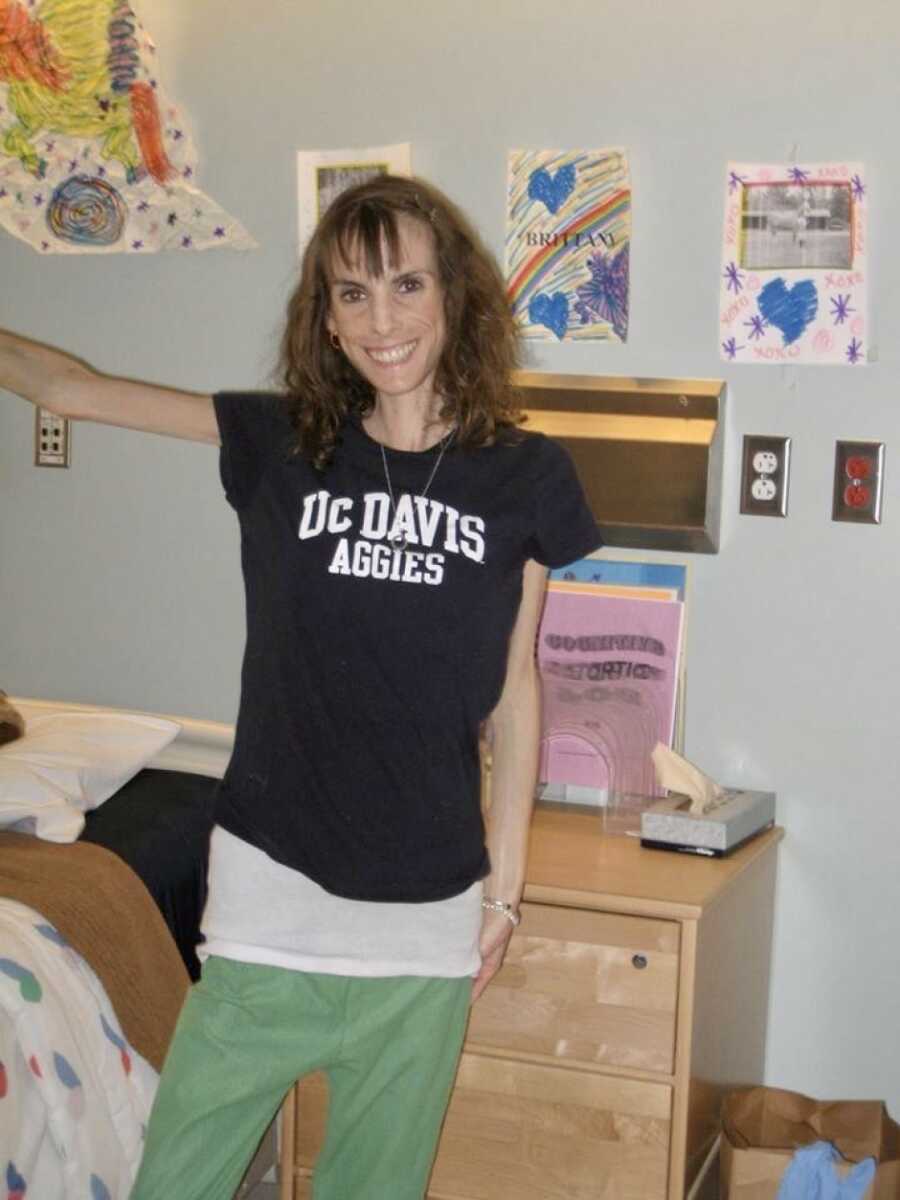
The university forced me to take a leave of absence, and I was admitted to a specialized eating disorder stabilization program. My weight fell to that of an eight-year-old, and I was not expected to survive the medical complications I faced. My parents were beside themselves in shock, but I was still in denial about the seriousness of my situation. Miraculously, I survived and stabilized enough to return home. Although I had never felt more traumatized and afraid of my eating disorder, I continued to cling to it like a lifeline. The behaviors still shielded me from confronting my underlying pain –weight had nothing to do with it. So, when my eating disorder morphed from anorexia to binge eating disorder, it wasn’t so surprising.
I’ll never forget August of 2009. I had my first binge. I inhaled all the favorite foods I had forbidden myself from touching over the past seven years. But I couldn’t stop. Just as anorexia served as a way to cope, albeit negatively, so did bingeing. My weight increased at a rapid rate, and by the year 2010 I weighed 221 pounds. I spent the majority of my days confined to my house bingeing, and I would only leave to shamefully buy more food. Desperate to fix myself externally, when I needed help internally, I began cycling through extreme weight loss programs, plans and fads. My efforts backfired, and I soon had a new sinister predicament with which to contend with.
Bulimia became my eating disorder’s solution to finding balance between the extremes. I was caught in an insidious binge-restrict cycle. My binges would often total upwards of 10,000 calories, but even more alarming were the laxatives I then would take, sometimes 100 at a time. I exhaustively tried to stop, but I continued to fall back into the same trap. To complicate my situation further, I looked relatively healthy and would often receive compliments on my appearance. Many people who knew my history even congratulated me for recovering, as if it were a thing of the distant past. I allowed them to believe this were true, but they only saw a snapshot of my life. They didn’t see the other 23 hours of my day when I was still playing Russian roulette with my life.
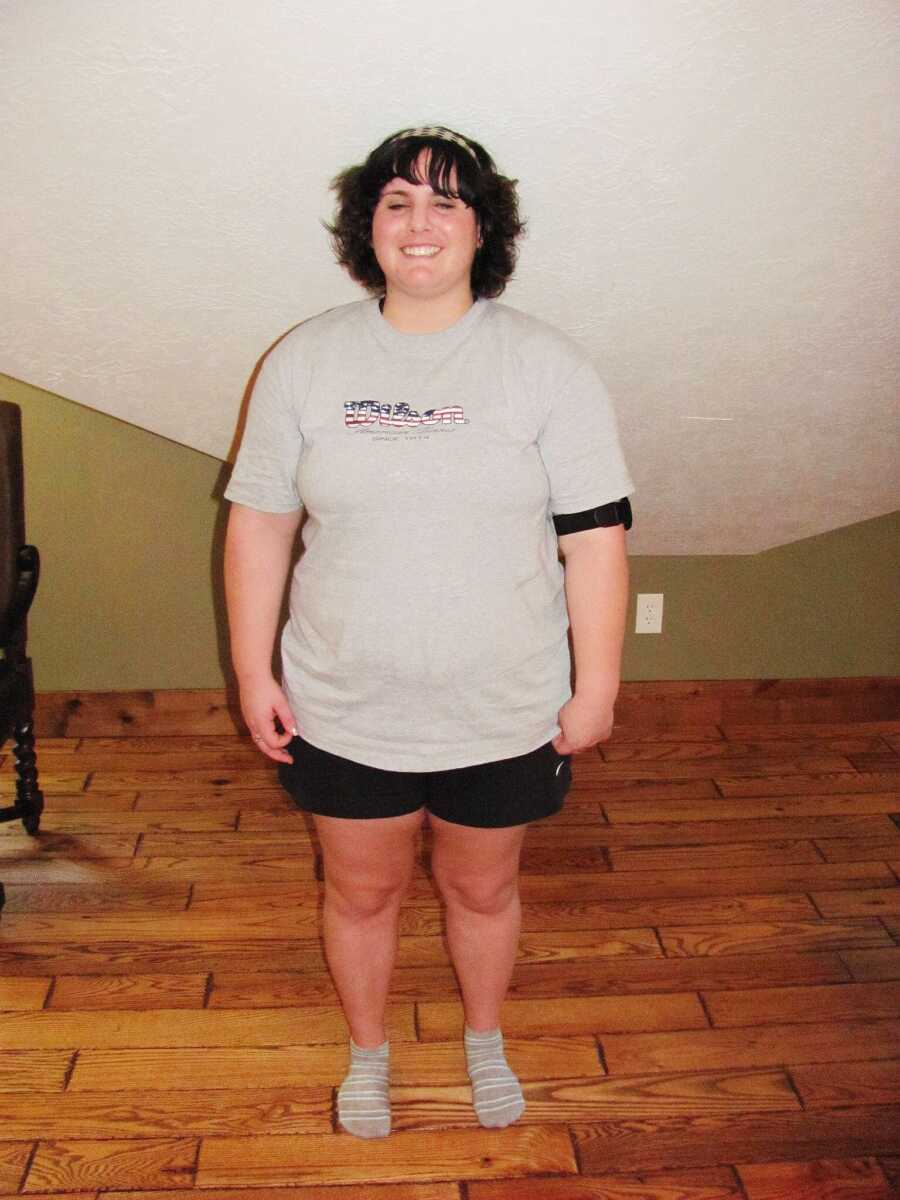
My family remained supportive of me, but not my eating disorder. They gave me a heavy dose of tough love, and I began working with an outpatient treatment team. And for the first time, I began making some real progress. I tip-toed out of my comfort zone and pushed myself to find new outlets in my life. My love for horses was rekindled and I found great satisfaction playing tennis again. I made the decision to return to college as a transfer student at California Polytechnic University and continued my psychology degree. During this time, I was also beginning to open up more about my eating disorder journey on Instagram, and I was overwhelmed by the positive response. I found a great sense of purpose in being able to share my trials and triumphs with others, and the lessons that I had learned on the road to recovery. I saw how many individuals could relate to parts of my story and it gave me the courage to write a memoir.
My tell-all, harrowing tale, ‘Safety in Numbers: From 56 to 221 Pounds, My Battle with Eating Disorders –A Memoir,’ was published in early 2016. The book is composed almost entirely of journal entries taken from the hundreds of detailed diaries I had kept throughout my years of disordered madness. I made the decision to publish my account in an uncensored format so that I could better shed light and awareness on the reality of mental illness. More importantly, I wanted to demonstrate that there is always hope that one can get better and recover.
My own recovery proved to be the biggest challenge of them all. Recovery is significantly harder than staying sick in your disorder. I learned that when it comes to eating disorders, there can be false rock-bottoms and you’ll never think you’re sick enough to ask for help, nor feel ready to recover. This was a huge wake-up call and turning point for me. Many times, I had reached physical lows that should have been enough to convince me to recover and change. But they weren’t. They never were. I had to hit rock bottom in my mind –this was the source of my conflict and also my healing.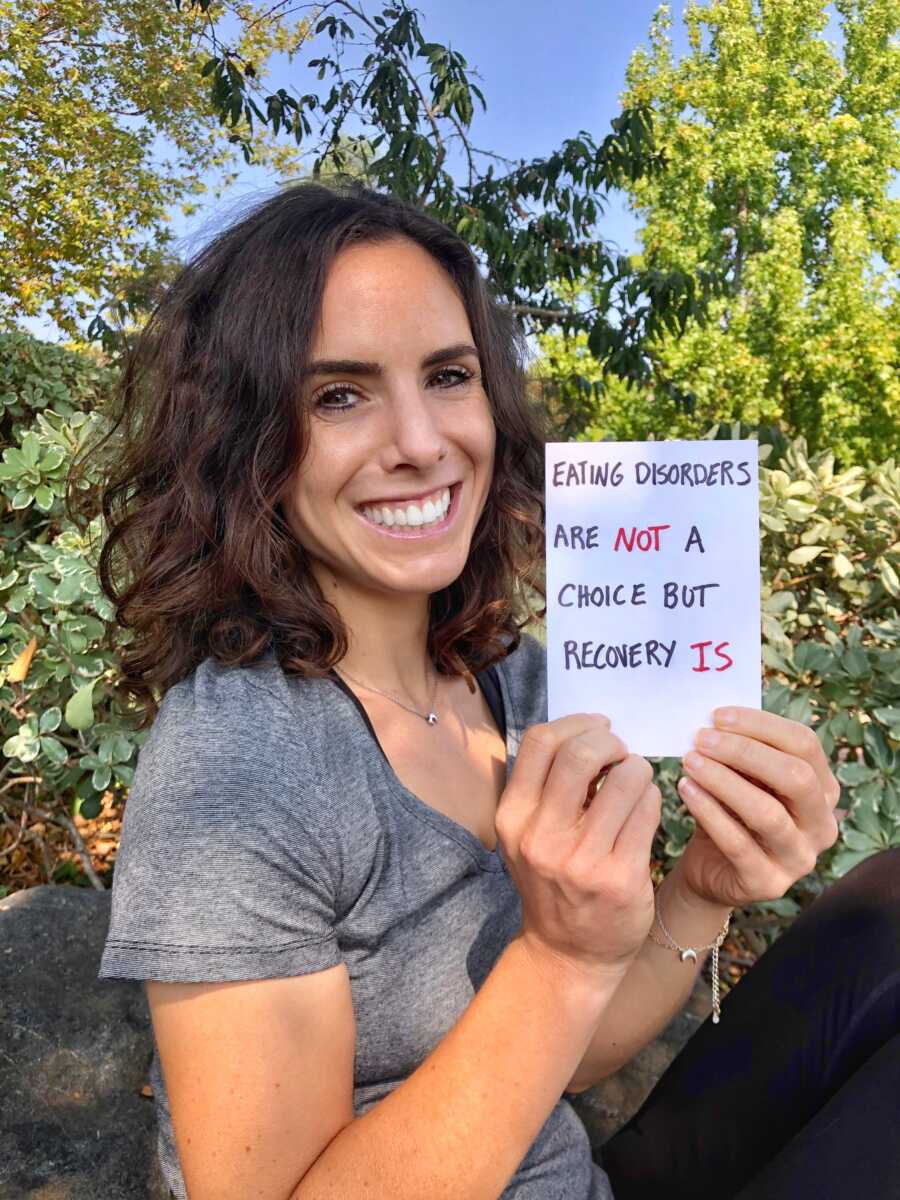
I faltered many times during my recovery and often questioned if it were really worth it. Initially, recovery felt worse. My eating disorder had been my identity for many years, and I wasn’t sure who I was without one. For a long time, I mistakenly believed I could have both a normal life and keep parts of my eating disorder just in case life became too hard. But this is not an option that exists. I had to trust those around me I wouldn’t collapse should I let go of my disorder entirely. Each day I had to recommit myself to recovery. Unlike with other addictions, you cannot abstain from food. My healing process was not straightforward or easy, but it enabled me to feel and appreciate the highs and lows life offers. In many ways, it was a new beginning.
In hindsight, I can clearly see the troubled paths I walked and how they often led to dead-ends. I do not regret any part of my struggle or journey for they have brought priceless lessons and gifts. The same strength it takes to endure an eating disorder can be used to overcome it. The life I now have is one built on perseverance, self-belief, and gratitude. Recovery has enabled me to open new doors and discover parts of myself I otherwise would not have found. I became a certified professional life coach specializing in eating disorders, and I feel fortunate I can share the lessons I have learned to help others navigate their own recovery. I am still actively writing and am currently in the process of completing the manuscripts for the sequels to Safety in Numbers that conclude my recovery journey.
An eating disorder was a part of my life, but it no longer defines who I am. Often, it’s our greatest challenges that offer the most opportunity for growth. Hardships can be transformed into healing, and broken pieces of ourselves can be mended. Not all victories are visible, but it’s often what we cannot see that matters the most.”
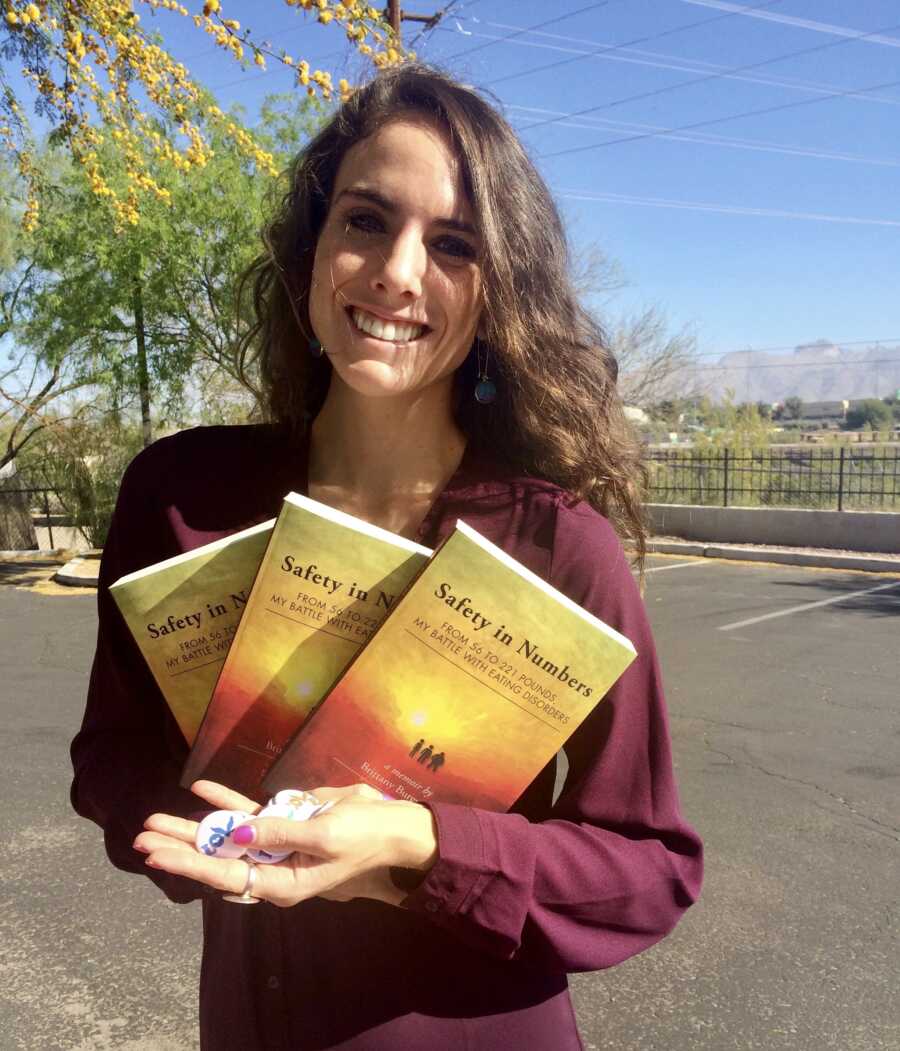
This story was submitted to Love What Matters by Brittany Burgunder from San Luis Obispo, California. You can follow her journey on Facebook, Instagram, and her website. Do you have a similar experience? We’d like to hear your important journey. Submit your own story here. Be sure to subscribe to our free email newsletter for our best stories, and YouTube for our best videos.
Read more here:
Provide hope for someone struggling. SHARE this story on Facebook to let them know a community of support is available.

